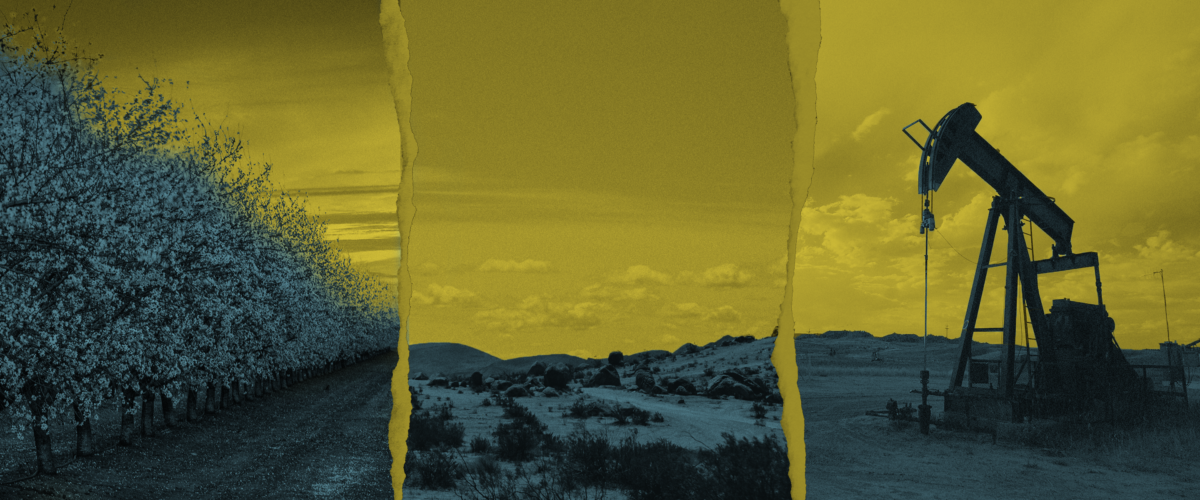These Industries Are Sucking Up California’s Water
Published Feb 24, 2022

Over a million Californians can't access clean water. Why hasn’t Governor Newsom halted corporate water abuses?
Over the past decade, despite the historic drought, California’s thirsty almond and pistachio farms have continued to grow. This has had a grave impact on the state’s water supply.
In 2021, expanding almond and pistachio acreage grew its annual water use by 523 billion gallons of water compared to 2017 — enough to supply 87% of California’s population. Meanwhile, over a million Californians lack reliable access to clean water.
It’s the middle of the California rainy season, but the last 50 days have been bone dry. San Francisco, which usually gets at least 4 inches of rain by now, has seen less than a quarter-inch.
Los Angeles has followed suit and the Sierra snowpack — providing much of California’s water — is 66% of its normal volume. Our main reservoirs hover between 50-80% of historic averages.
These challenges come in the midst of a historic 20-year climate change-driven drought — the worst in the last 1200 years.
It’s not just California — most of the western United States is experiencing this historic megadrought. States like Oregon, New Mexico, and Montana are seeing conditions even worse than California.
It’s a good reason to reexamine water use regionally and take on some of the most water-intensive and climate-polluting industries. That means taking on big agribusiness, factory farms, and the fossil fuel industry.
Big Agribusiness Consumes Huge Amounts of Water and Profits at the Expense of the Environment
Government attention and media coverage about drought focuses on things individuals can do to save water. It ignores the fact that agriculture uses the most water. And the vast majority goes towards big agribusiness, including growing water intensive crops like almonds and alfalfa.
You can learn more about what’s really behind California’s drought in the new report, “Big Ag, Big Oil, and the California Water Crisis.”
In California, 80% of our water goes toward agriculture and 20% of that goes to tree nuts. Around two-thirds of these nuts are exported overseas, leaving massive profits for corporate titans, but less water in California. Another 16% is used for alfalfa, a water-intensive crop used to feed cows on factory farms or for export.
These crops have increased through the 20 year drought and have no business being grown to this scale in our arid climate. This is especially true as salmon die and over a million Californians lack access to clean water, in part due to sinking groundwater tables.
Saudi Arabia has a law that prohibits the growth of alfalfa because of the lack of water. That’s no problem for a Saudi company that gained access to water rights in California. It exports alfalfa grown here back to Saudi Arabia to support its mega-dairies.
Saudi Arabia also imports hay from drought-stricken New Mexico for the same purpose. This should not be possible, but no action has been taken to stop it.
Factory Farms Use and Pollute Water While Driving the Climate Crisis
Factory farms are a huge driver of climate change. Out of all the things humans do, livestock production is responsible for 14.5% of total greenhouse emissions.
At the same time, factory farms consume tremendous amounts of water — especially big dairy operations. California is home to nearly 1.7 million dairy cows, which are largely part of mega-dairy operations.
In addition to the water used for alfalfa, mega-dairies use 142 million gallons of water a day. That’s more than the daily recommended water usage for San Jose and San Diego combined. This is in addition to all the water polluted by runoff and waste.
New Mexico, Oregon, and other western states have similar mega-dairy operations, even as drought persists and water resources run low.
The Fossil Fuel Industry Continues to Use and Pollute Water While Fueling Climate Chaos
The largest driver of climate chaos is the fossil fuel industry. Maddeningly, the industry continues to operate extensively in California — using and polluting vast amounts of water.
Between January 2018 and March 2021, the industry used over 3 billion gallons of freshwater for drilling operations. To put this in perspective, this is the equivalent of 120 million showers for California households. At the same time, fossil fuel operations have polluted California’s aquifers with dirty wastewater.
Governor Newsom Could Take Action to Rein in These Industries. He’s Yet To Do So.
It doesn’t have to be this way. Governor Newsom is promoting a tunnel to bring more water from Northern California to support industrial agriculture in the Central Valley. Instead, he should rein in polluters making massive profits while the environment suffers and over a million Californians can’t access clean water.
He should exercise his authority to stop new factory farms, almonds and alfalfa, and oil drilling. He can use his power to roll back these industries. We should all do our part to save water, but the real focus should be on the biggest water abusers.
We know Governor Newsom is responsive to public pressure. He has shown this with his recent moves to ban fracking and stop new drilling near homes and schools. It’s up to us to move him and other state leaders. They must take our water situation seriously, and boldly rein in these water abusers who are driving the climate crisis.
Update (February 1, 2023): Despite heavy rain and snow in January 2023, California remains in drought and long-term water issues persist. On February 1, Food & Water Watch released an updated report outlining California’s water crisis and calling on Governor Newsom to take bold action to Protect California’s Water.
Tell Governor Newsom: Protect California’s Water now!
Enjoyed this article?
Sign up for updates.
TO TOP


